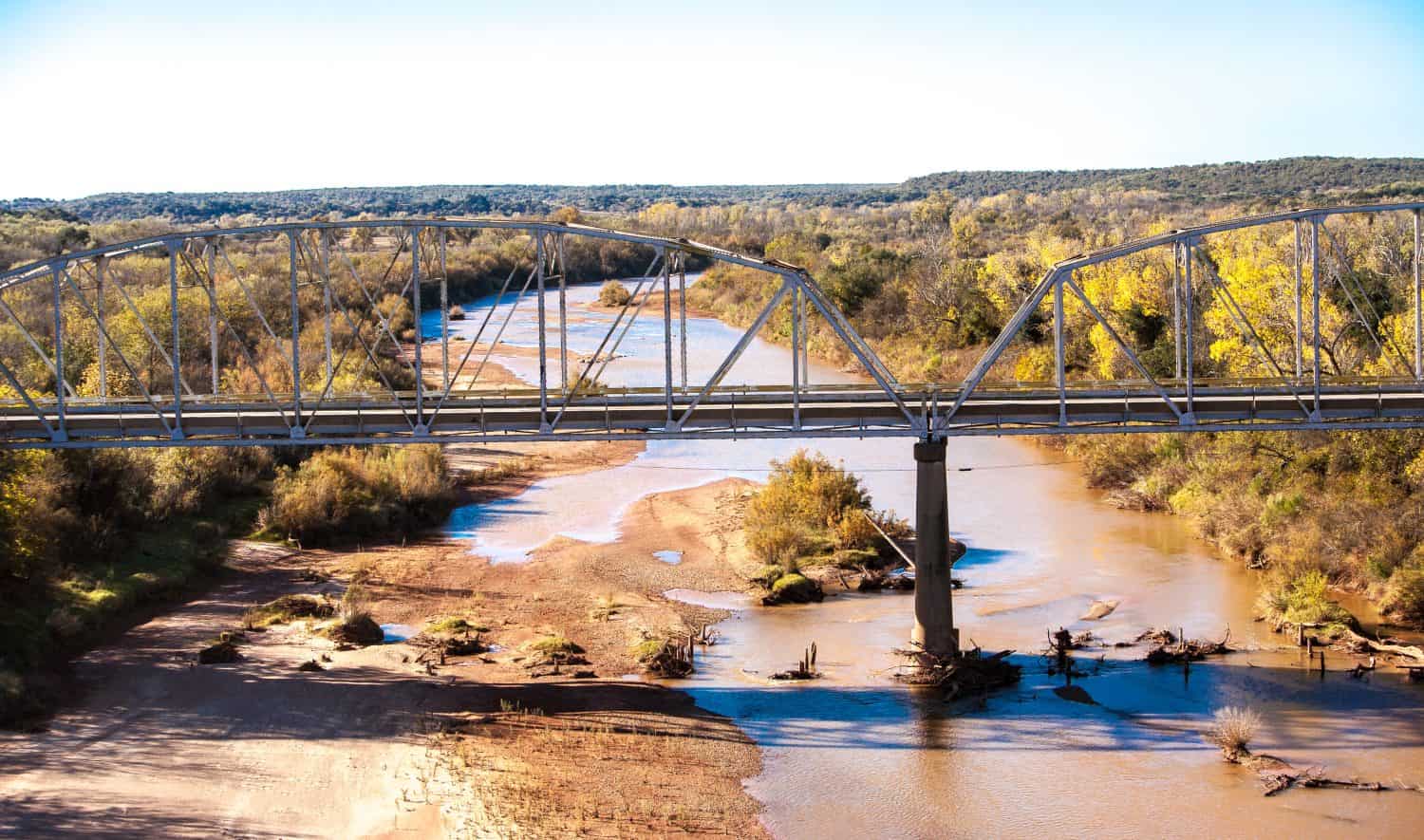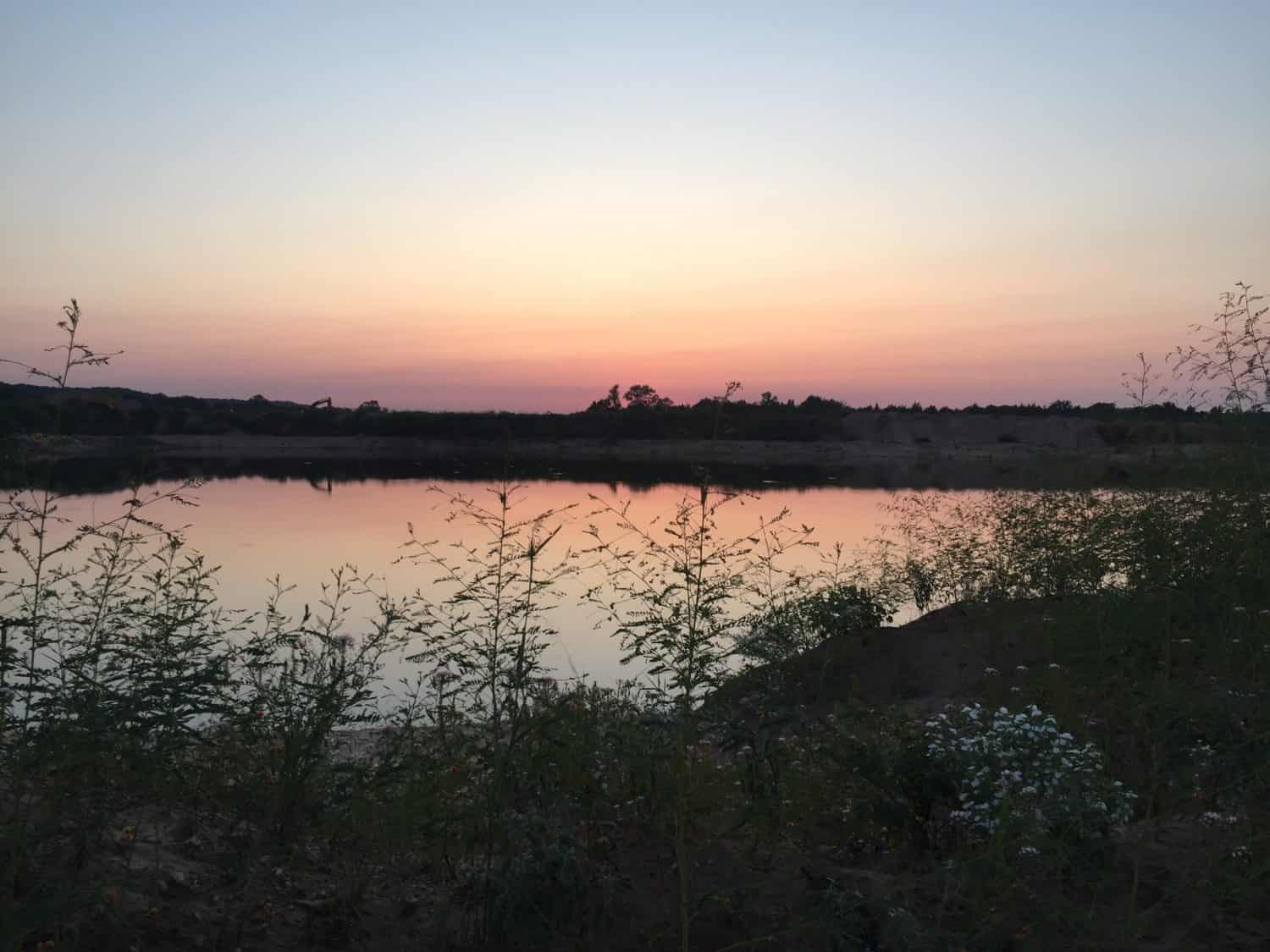There are a couple of different Red Rivers in the United States, and we’re going to be looking at one of them today. We’ll head down to the southern Great Plains, where the second-largest river basin in the area flows through a couple of states. This Red River serves as a border between Texas and Oklahoma, while also making up a partial border of Texas and Arkansas. It is a tributary of the famous Atchafalaya River, and helps to shape the region around it. In this article, we will be finding the length of this river, along with learning where it begins and ends. So, let’s get started.
How Long is the Red River of the South?

The Red River of the South used to be a major tributary of the Mississippi, but now diversions cause it to flow separately into the Gulf of Mexico.
©Bob Pool/Shutterstock.com
The Red River of the South flows 1,360 miles before reaching its end. The headwaters of the Red River of the South rest in New Mexico. However, the main course of the river begins a little bit later. The Red River truly begins its journey in the Texas panhandle where two river branches meet. The northern fork of the river, North Fork, flows through Oklahoma to meet the southern fork – Prairie Dog Town Fork – near the Texas-Oklahoma border. This is just northeast of Vernon, Texas. The river continues east and makes up the borders of several states as it flows into Arkansas and then enters Louisiana. Along this journey, it meets a partial outflow of the Mississippi River before it makes its way to its confluence with the Atchafalaya. This confluence occurs near Simmesport, Louisiana.
The Red River of the South used to be a tributary of the Mississippi River before humans erected a flood-control system – the Old River Control Structure – that separated it from the Mississippi River. It is now a simple distributary of the Mississippi, and it flows separately from the main river as it enters the Gulf of Mexico.
Why is it Called the Red River?

You can’t see the red color of the river when the water is low or when the sun is sinking. The best time to see the rusty red pigment of the Red River is during flood season.
©aleedesigns/Shutterstock.com
The region of the southern United States that the Red River of the South flows through has red-colored soil that distinguishes the area from other regions. This soil spreads across the entire basin of the river. The waters are colored a rusty red during high flow events.
More About the Red River of the South

An image of the Red River as it creates the border between Texas and Oklahoma.
©RaksyBH/Shutterstock.com
The Red River of the South is the second-longest river associated with Texas. 640 miles of the river exist in Texas or along the Texas boundary. Its name was originally “Rio Rojo”, which means “red river” in Spanish. In Texas alone, the drainage area of this river covers 30,700 square miles. Interestingly, this river has a pretty high salt content in comparison with other fresh rivers.
This incredible river has four main branches. They are the Elm Fork (or Elm Creek), the North Fork, the Salt Fork, and the Prairie Dog Town Fork. Prairie Dog Town Fork is widely recognized as the main fork the of the river. This was first stated in 1852 and it has held fairly strong today, though there is some debate about why. It’s interesting to observe the long course of history along the river. We know of records from expeditions dating back to 1541. There are likely thousands of years of Indigenous History that predate those years.
Thank you for reading! Have some feedback for us? Contact the AZ Animals editorial team.







